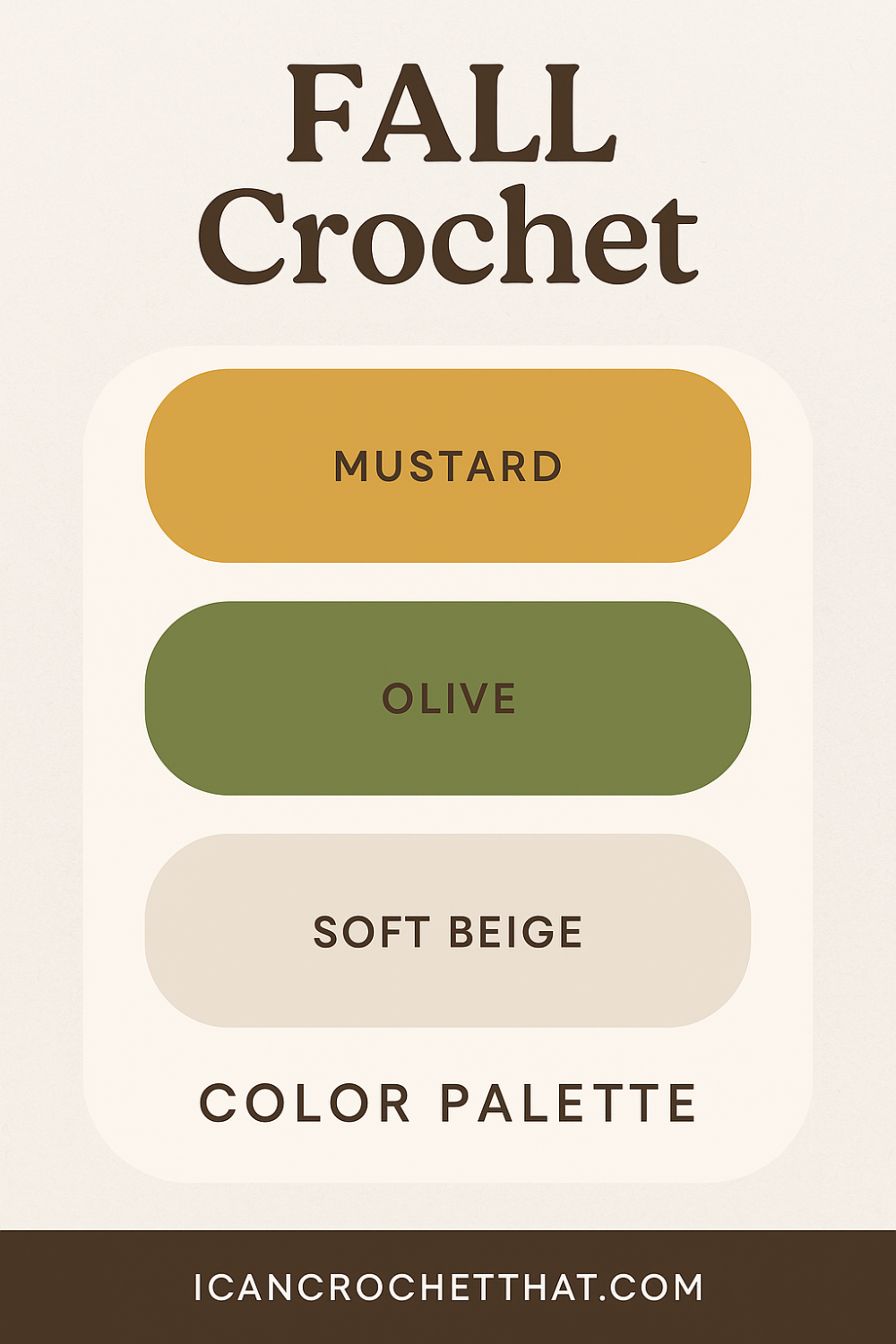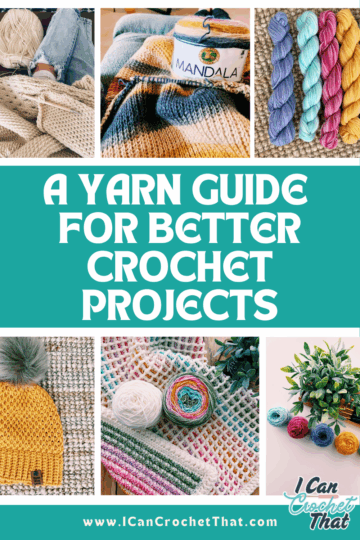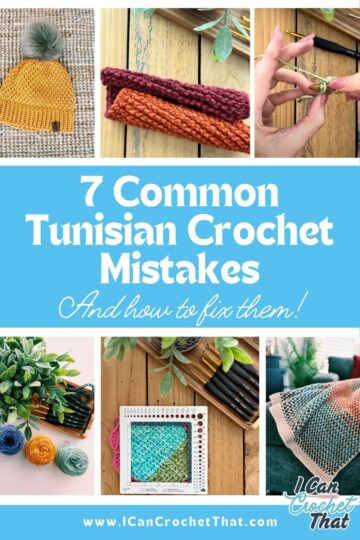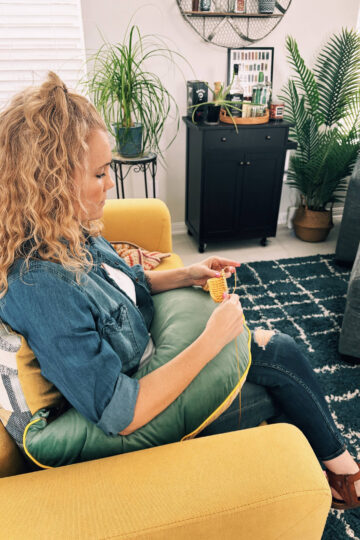Yarn labels may seem like tiny instruction manuals wrapped around your yarn, and in a way, they are!
They contain essential details that help you choose the right yarn for your project and understand how it will behave when wet, in the wash, etc.
Let’s take a deeper look at each part of the label so you can shop (and crochet!) with confidence.
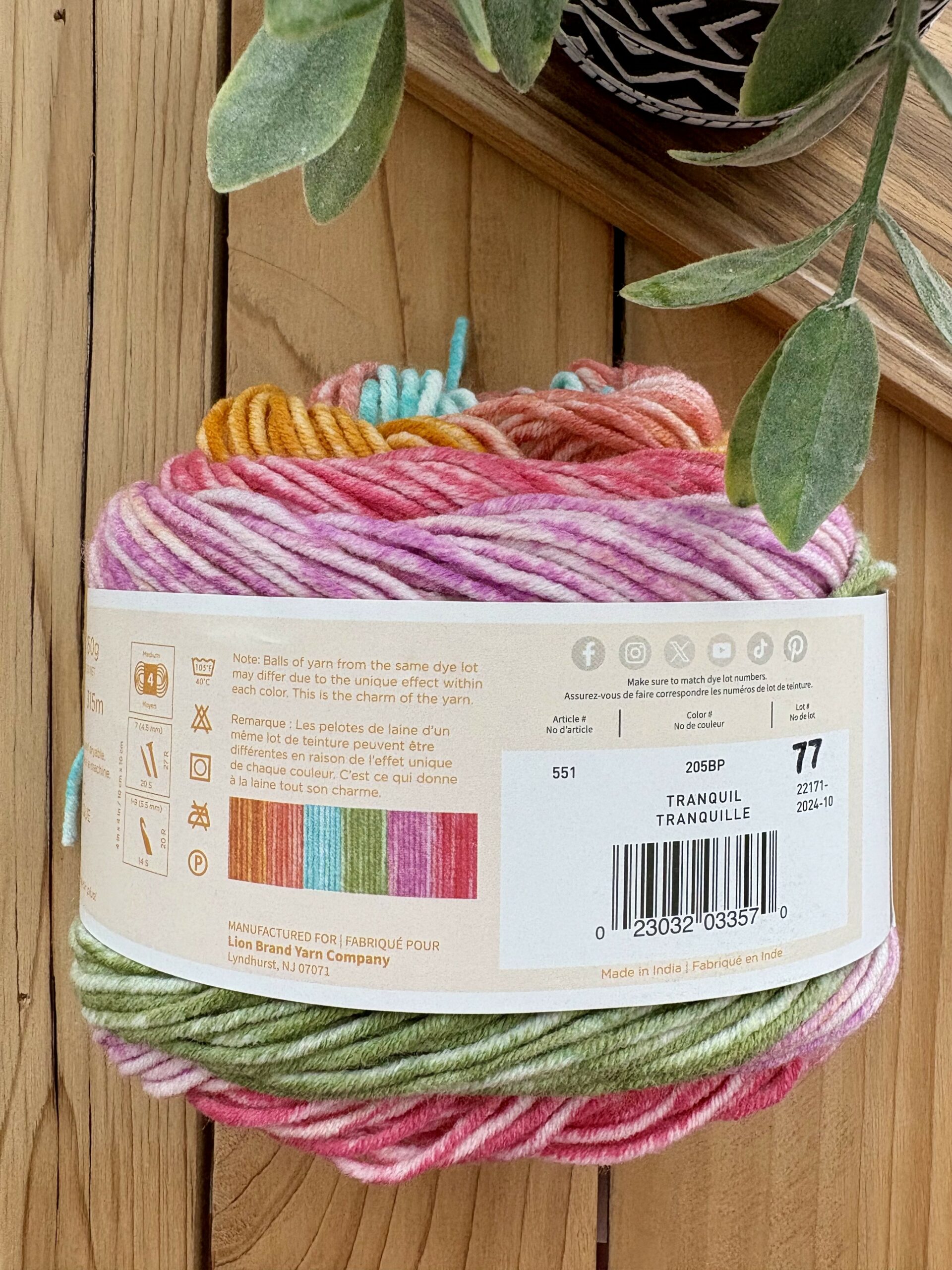
How to Find the Most Important Info on a Yarn Label
1. Understanding Yarn Weight: From Lace to Jumbo
What it is: Yarn weight refers to the thickness of the yarn strand, not the actual weight in ounces or grams.
Why it matters: It affects how your finished project looks and feels; heavier yarns create thicker, cozier projects, while lighter yarns are great for delicate or lacy designs.
Common weights include:
| Weight | Category Name | Common Uses |
| 0 | Lace | Doilies, shawls |
| 1 | Super Fine (Sock, Fingering) | Lightweight garments, baby clothes |
| 2 | Fine (Sport) | Summer tops, baby items |
| 3 | Light (DK) | Sweaters, hats |
| 4 | Medium (Worsted/Aran) | Blankets, scarves, cardigans |
| 5 | Bulky | Cozy cowls, winter hats |
| 6 | Super Bulky | Chunky blankets, fast projects |
| 7 | Jumbo | Arm knitting, extreme projects |
Always match the yarn weight to what your pattern recommends to get the best results.
Examples:
- The Cora Blanket is made with a weight 5/Bulky yarn
- The Estes Camping Blanket is made with a weight 3/Light (DK) yarn
- The Finley Blanket is made with a weight 4/Worsted Weight yarn
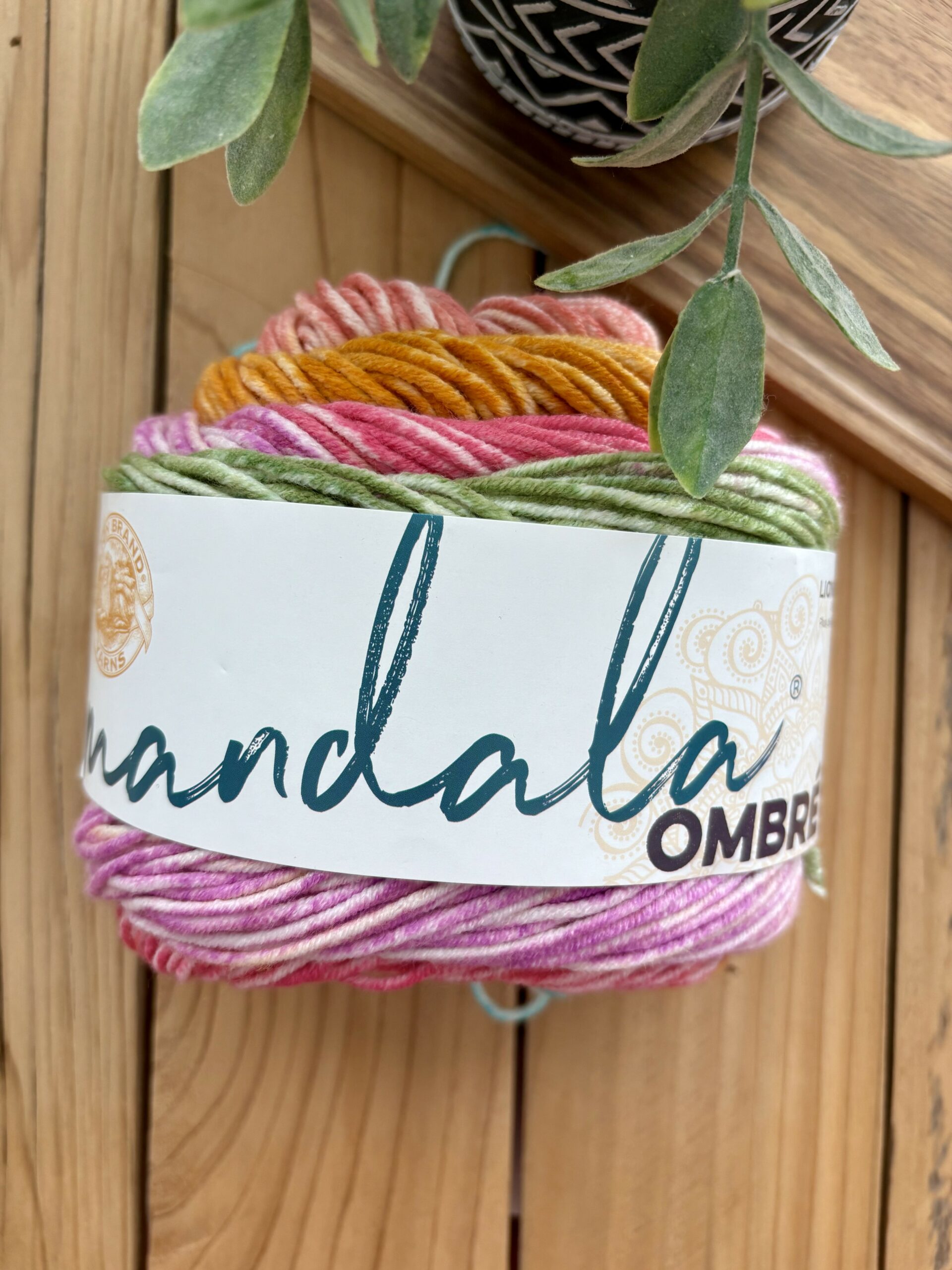
2. Decoding Fiber Content: What’s Best for Your Project?
What it is: This tells you what material the yarn is made from.
Why it matters: Different fibers have different textures, durability, washability, and stretch. Here are a few popular types:
- Acrylic: Affordable, soft, and easy to wash—perfect for beginners and everyday items.
- Cotton: Breathable and sturdy, great for summer wear, dishcloths (like these crochet waffle stitch dishcloths), and bags.
- Wool: Warm and elastic. Some wool is machine-washable (look for “superwash”), but untreated wool usually needs to be hand-washed.
- Alpaca: Warmer and softer than wool, but can be more slippery and less elastic.
- Blends: Many yarns combine fibers (e.g., wool-acrylic) to balance softness, durability, and washability.
Always choose a fiber that suits the purpose of your project.
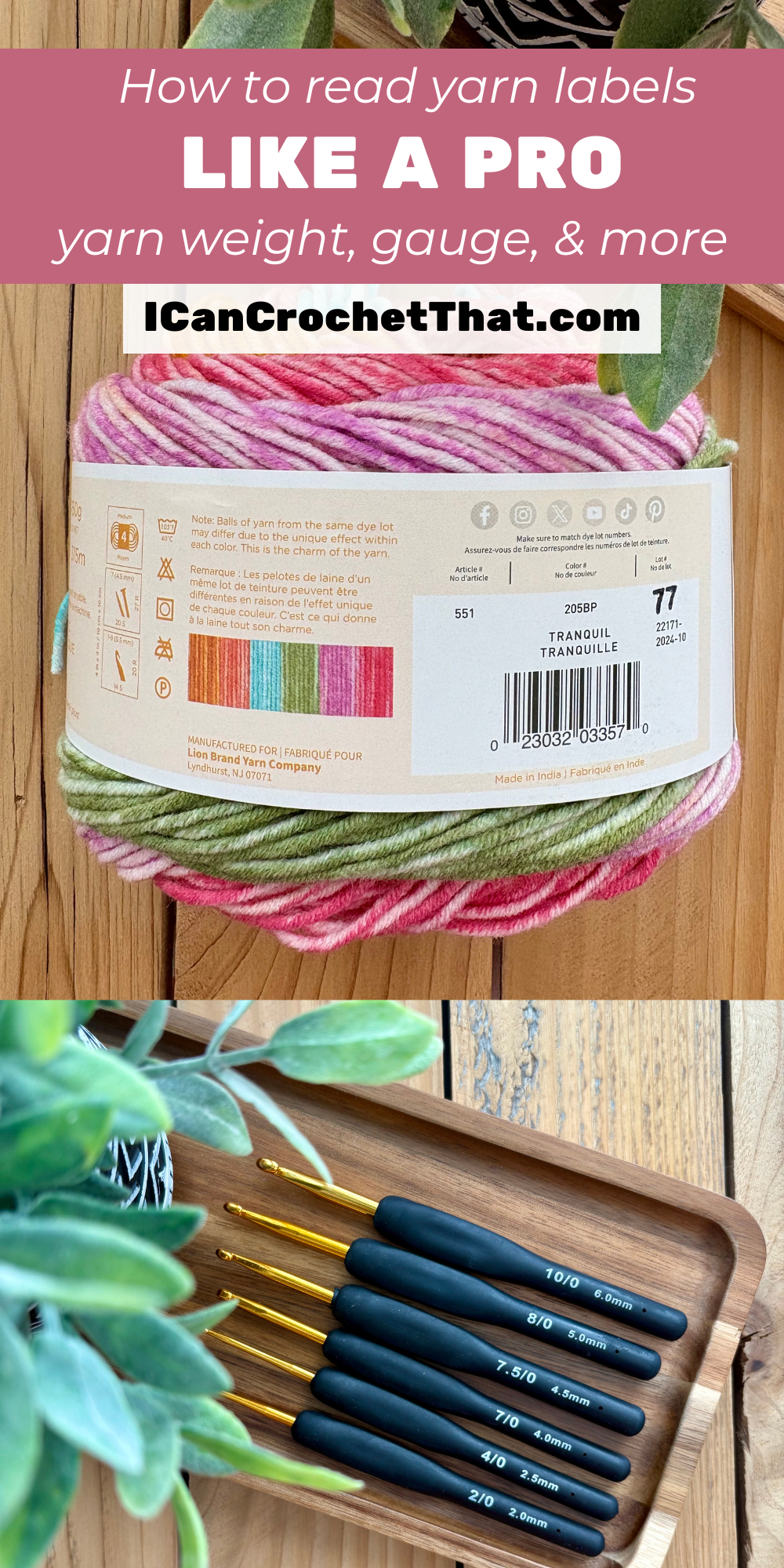
3. How to Read Yarn Length and Skein Size
What it is: This tells you how much yarn you’re getting, usually listed as weight (grams or ounces) and length (yards or meters).
Why it matters: It helps you calculate how many skeins you’ll need for a pattern. For example, a pattern may call for 600 yards of yarn—if your skein is 200 yards, you’ll need three skeins.
Tip: Heavier skeins don’t always mean more yarn. Bulky yarns may weigh more but have less yardage due to their thickness.
4. Recommended Hook and Needle Sizes Explained
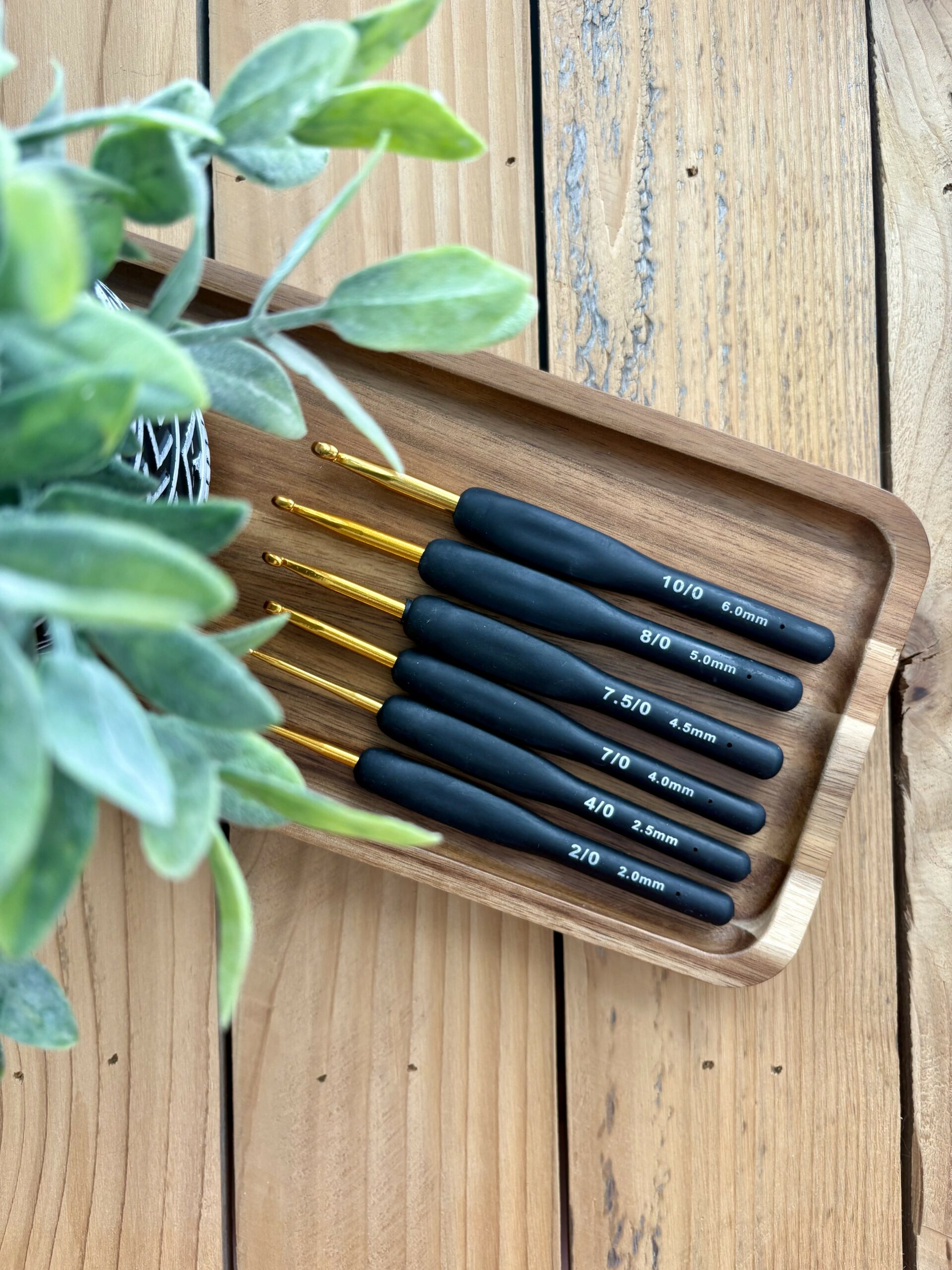
What it is: The manufacturer suggests what size hook or needle to use.
Why it matters: Using the recommended hook size usually gives you an average tension, and most of the time, that’s what patterns will recommend. But you can always size up or down depending on your stitch style or desired drape.
Example:
“Recommended Hook Size: 5.0 mm (H-8)”
If you crochet tightly, you might go up a size. If you crochet loosely, you might go down.
5. What Is Gauge and Why It’s on the Label
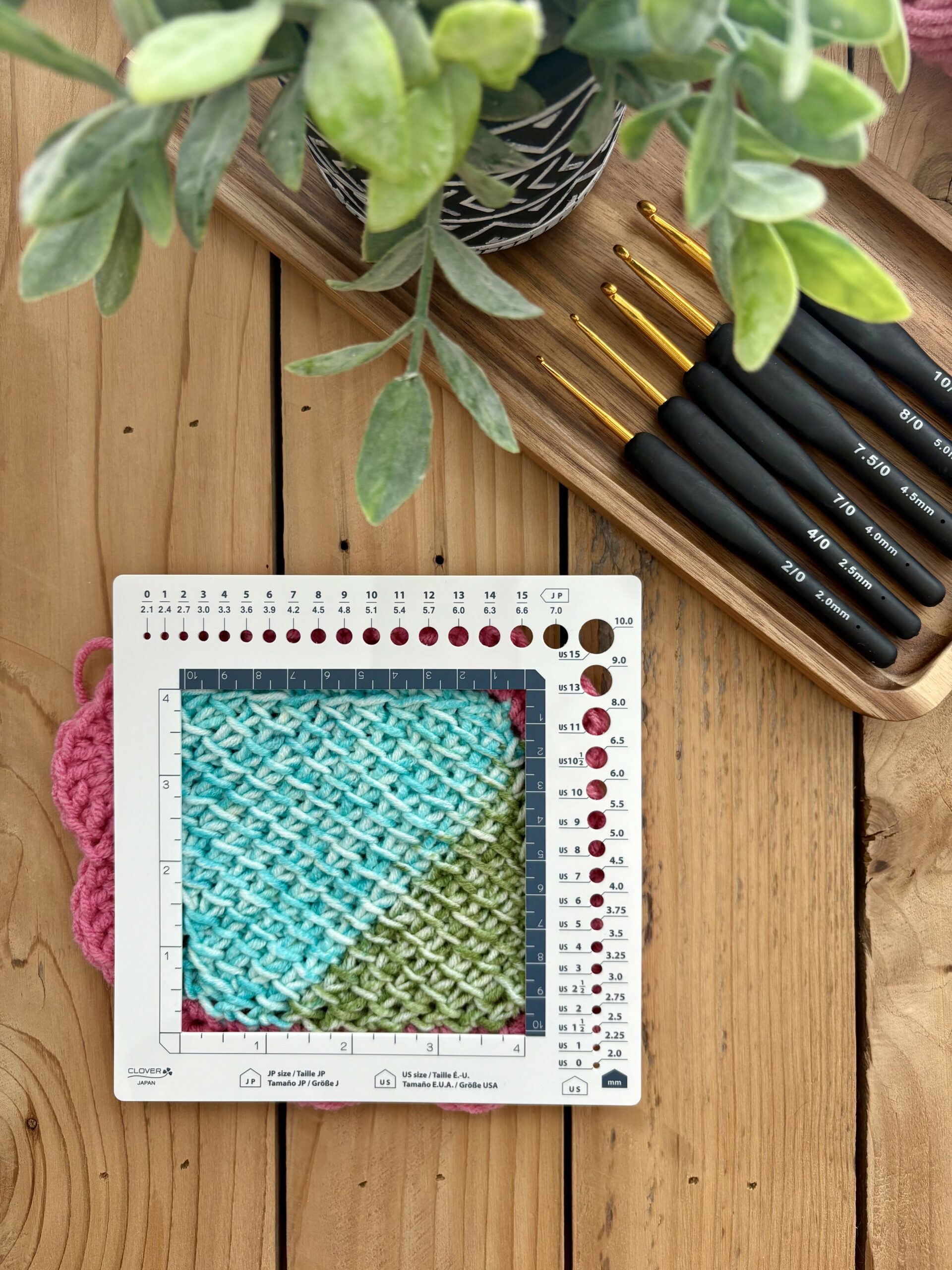
What it is: A measurement of how many stitches and rows fit within a 10cm (4 inch) square using the recommended hook.
Why it matters: If your stitches don’t match the pattern’s gauge, your finished item may end up too big or too small, especially for things like garments or hats. This isn’t as much of a concern for blankets, scarves, and things that don’t really have a “fit”, but it’s still important info.
How to check gauge:
- Make a swatch (usually 4” x 4”)
- Count how many stitches and rows fit
- Adjust your hook size if needed to match the pattern
Tip: Don’t skip this step for wearables! It’s essential for making sure the item fits before you finish and realize it doesn’t.
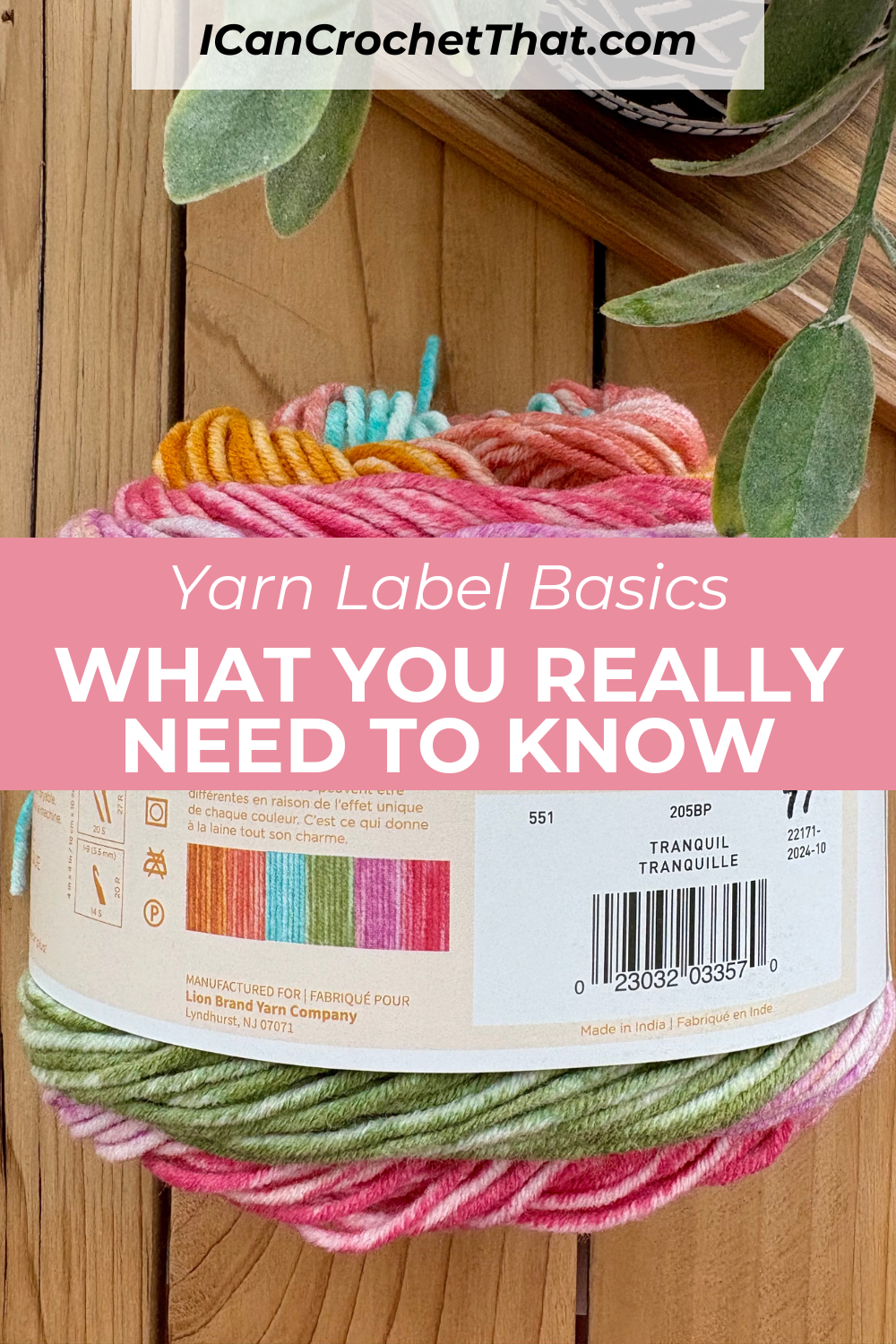
6. How to Read Yarn Care Instructions (So Your Project Lasts!)
What it is: Instructions for washing, drying, and handling your yarn.
Why it matters: Some yarns shrink or felt in the wash. Others may stretch out if air-dried incorrectly. Always check how to care for your yarn before laundering.
Common symbols:
- Tub with water: Machine washable
- Tub with hand: Hand wash only
- Triangle: Bleach-safe (if not crossed out)
- Iron symbol: Iron-safe (dots indicate heat level)
- Square with a circle: Tumble dry (dots = heat level)
- Line inside a square: Lay flat to dry
If the symbols confuse you, most yarns also include text instructions (e.g., “Machine wash cold, lay flat to dry”).
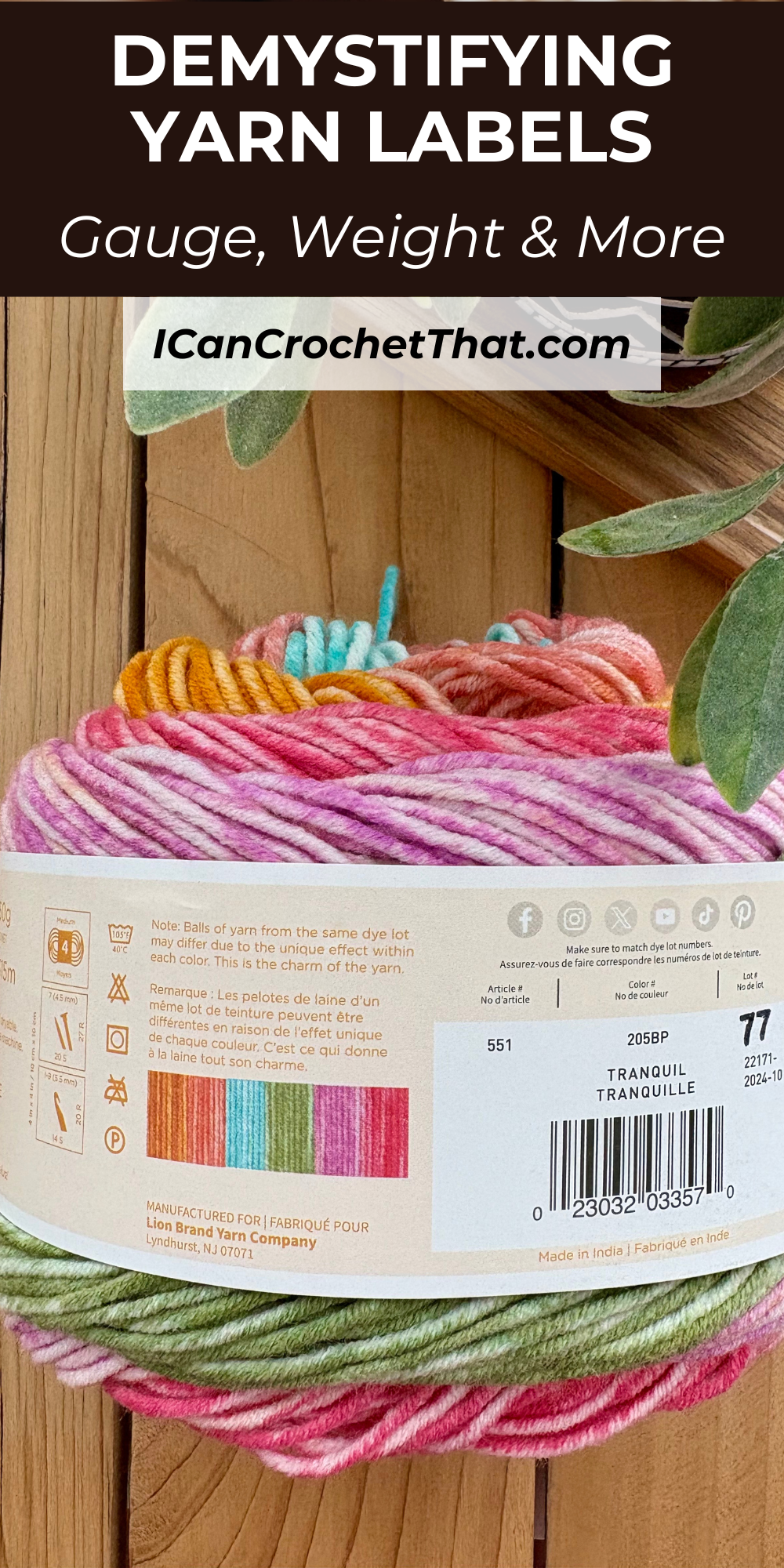
7. What Dye Lot Numbers Mean (and Why They Matter)
What it is: A batch number indicating when the yarn was dyed.
Why it matters: Even yarns labeled with the same color name can vary slightly in shade from batch to batch. If you mix dye lots in one project, the difference may be noticeable.
Tip: Always buy enough yarn from the same dye lot to complete your project—and maybe a little extra, just in case.
Next Steps: Put Your Yarn Label Knowledge to Work
Understanding yarn labels takes a little practice, but once you know what all those numbers and symbols mean, you’ll feel much more confident picking out yarn for any project.
Next time you’re shopping for a new skein, take a moment to read the label; you’ll be surprised how much it can tell you!

